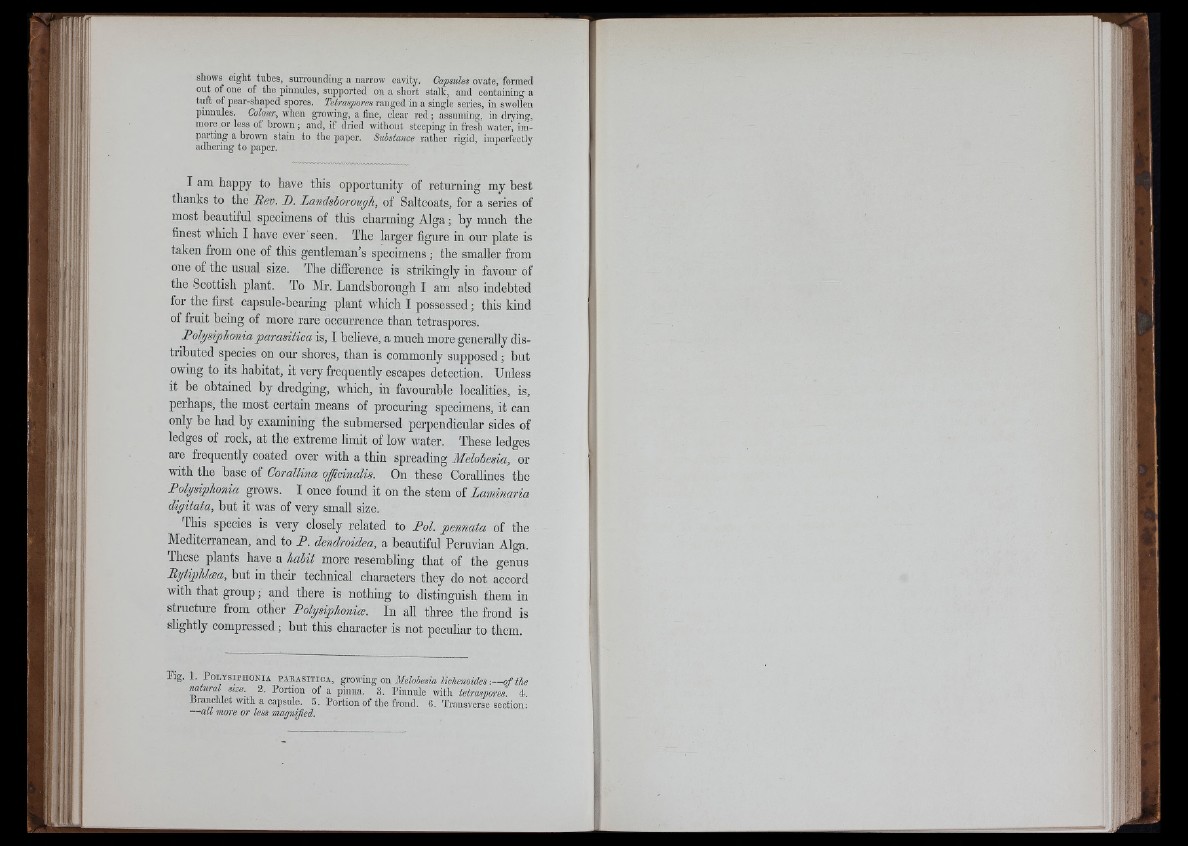
shows eight tubes, sun-oundiiig a narrow cavity. Capsules ovate, formed
out of one of the pinnules, supported on a short stalk, and containing a
tutt of pear-shaped spores. Tetraspores ranged in a single series, iu swollen
piimules. Colour, when growing, a fine, clear r e d ; assuming, in drying,
more or less of brown; and, if dried without steeping in frerii water, imparting
a brown stain to the paper. Substance rather rigid, imperfectly
adhering to paper.
II
I am happy to have this opportunity of returning my best
thanks to the Meo. B. Landsborough, of Saltcoats, for a series of
most beautiful specimens of this charming Alga; by much the
finest which I have ever seen. The larger figure in our plate is
taken from one of this gentleman’s specimens; the smaller from
one of the usual size. The difierence is strikingly in favour of
the Scottish plant. To Mr. Landsborough I am also indebted
for the first capsule-bearing plant which I possessed; this kind
of fruit being of more rare occurrence than tetraspores.
Polysiphonia parasitica is, I believe, a much more generally distributed
species on our shores, than is commonly supposed; but
owing to its habitat, it very frequently escapes detection. Unless
it be obtained by dredging, which, in favourable localities, is,
perhaps, tbe most certain means of procuring specimens, it can
only be had by examining the submersed perpendicular sides of
ledges of rock, at the extreme limit of low water. These ledges
are frequently coated over with a thin spreading Melobeaia, or
witb the base of Corallina officinalis. On these Corallines the
Polysiphonia grows. I once found it on the stem of Laminaria
digitata, but it was of very small size.
This species is very closely related to Pol. pennata of the
Mediterranean, and to P. dendroidea, a beautiful Peruvian Alga,
These plants have a habit more resembling that of the genus
Pytiphlaa, but in their technical characters they do not accord
with that group; and there is nothing to distinguish them in
structure from other Polysiphonim. In all three the frond is
slightly compressed; but this character is not peculiar to them.
Kg. 1. P o ly s ip h o n i a p a r a s i t i c a , gi-owing on lichenoides-.— o f the
imtural size. 3. Portion of a pinna. 3. Pinnule with tetraspores. 4.
Branchlet with a capsule. 5. Portion of the frond. 6. Transverse section:
'—all more or
■‘8